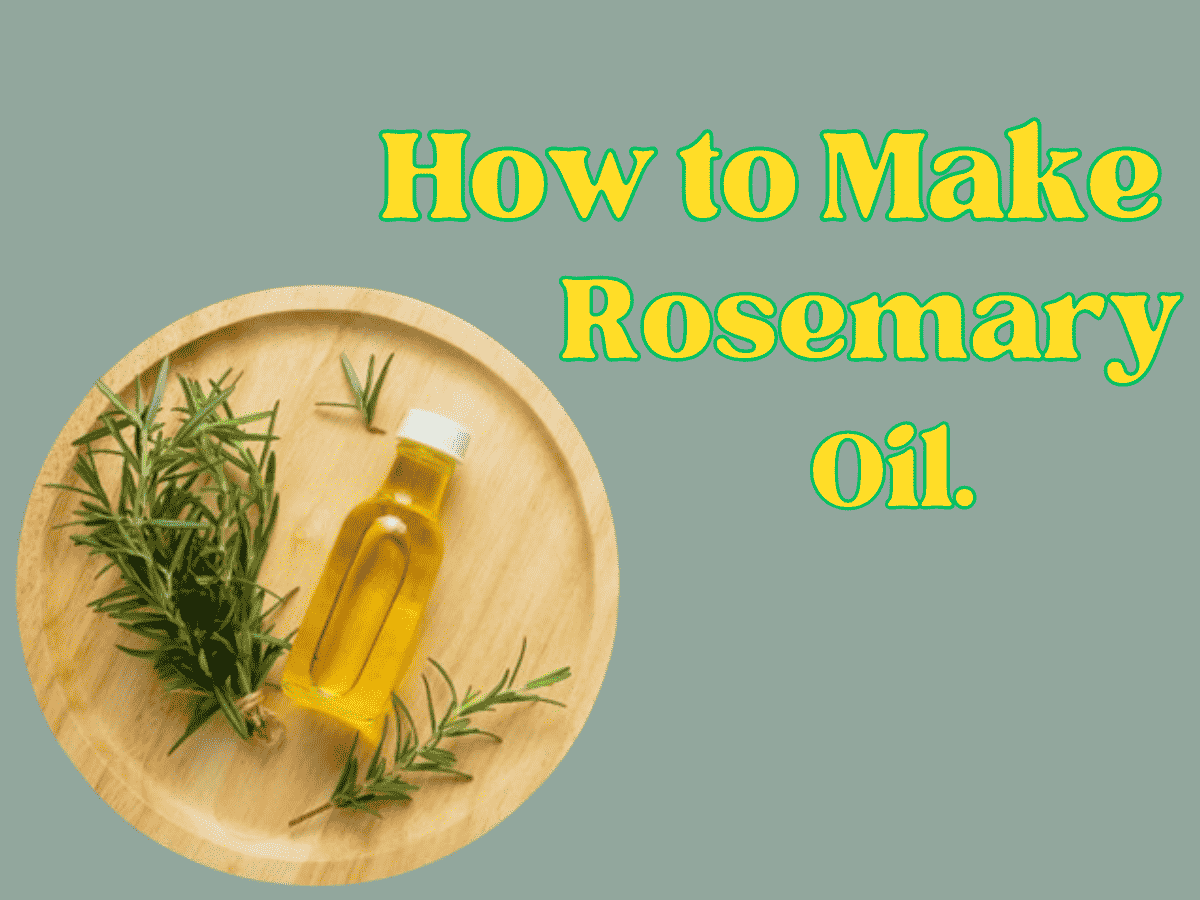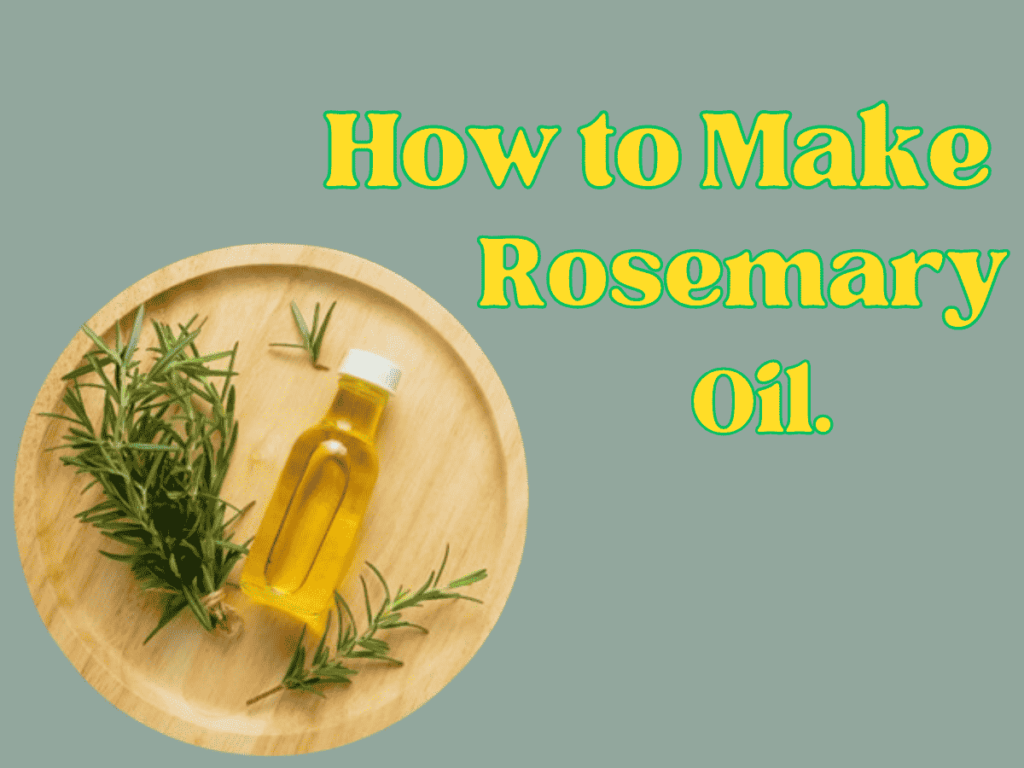
How to Make Rosemary Oil: A Simple Guide for Hair Growth and More
Rosemary oil has become a popular natural remedy for those looking to enhance hair growth, improve scalp health, and even alleviate stress. Its many benefits and ease of making it at home make rosemary oil an excellent addition to your wellness routine. In this guide, you’ll learn everything you need to know about making rosemary oil, from selecting fresh or dried rosemary to blending it with various carrier oils like coconut oil for maximum benefits.
Whether you’re interested in learning how to make rosemary oil at home or you’re curious about creating a specific blend for hair growth, this article will guide you through the steps, answer common questions, and share some tips for avoiding potential pitfalls. Let’s get started!
Available on Amazon : Botanic Hearth 100% Pure Rosemary Oil For Hair Growth Infused With Biotin (6.7 fl oz) | Hair strengthening Treatment | Nourishing & Volumizing | With Jojoba Oil & Castor Oil | Non GMO Verified
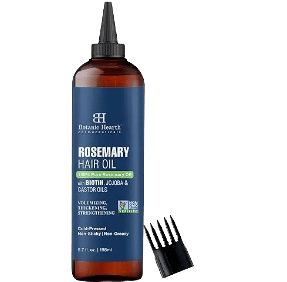
Table of Contents
Why Make Your Own Rosemary Oil?
Homemade rosemary oil has several advantages. Not only is it more economical, but you can also customize it by choosing the type of oil and rosemary (fresh or dried) that best suits your needs. Rosemary oil has been cherished for its antimicrobial, antioxidant, and anti-inflammatory properties, making it ideal for scalp and hair health.
Benefits of Using Rosemary Oil for Hair
Before we jump into how to make rosemary oil for your hair, let’s review some key benefits of using this oil on your scalp and hair:
– Hair Growth Boost: Rosemary oil stimulates blood circulation to the scalp, which helps to promote hair growth.
– Reduced Hair Thinning: Regular use may help slow hair thinning and support thicker, fuller hair.
– Dandruff Control: With its antimicrobial properties, rosemary oil can help keep the scalp clean and free from dandruff.
– Improved Shine: Rosemary oil enhances natural shine and smoothness in the hair, making it appear healthier.
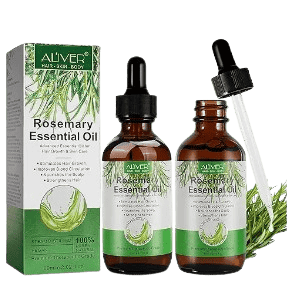
Available on Amazon: Pure Organic Rosemary Essential Oils – 2 pack, Hair Growth Scalp Oil for Dry Damaged Hair(2.02 Fl Oz)
How to Make Rosemary Oil at Home
Let’s dive into the basic steps of how to make rosemary oil at home. This is a gentle infusion method that works well for both fresh and dried rosemary.
Ingredients You’ll Need:
1. Fresh or Dried Rosemary: Fresh rosemary has a stronger scent, while dried rosemary is convenient and lasts longer in storage.
2. Carrier Oil: Popular choices include olive oil, coconut oil, and almond oil. If you’re wondering how to make rosemary oil with coconut oil, you’ll be pleased to know that coconut oil works wonderfully as it has its own set of hair-enhancing properties.
Method 1: The Hot Infusion Method
The hot infusion method is the quickest way to make rosemary oil, which can be used right away after cooling.
1. Prepare the Ingredients: Begin by washing fresh rosemary and allowing it to dry completely. If you’re using dried rosemary, it’s ready to go.
2. Heat the Oil: Pour your carrier oil (coconut oil or olive oil) into a saucepan, using about 1 cup of oil for every 1 cup of rosemary.
3. Add Rosemary: Add your rosemary into the saucepan. Stir it gently and heat the mixture on low for 5-10 minutes. Avoid letting the oil boil.
4. Simmer and Steep: Once the oil is warm and fragrant, remove it from heat and allow it to cool. This lets the rosemary infuse into the oil.
5. Strain and Store: After the oil has completely cooled, strain the mixture using a fine-mesh strainer or cheesecloth, separating the rosemary from the oil. Store your rosemary oil in a clean, airtight bottle or jar.
Method 2: The Cold Infusion Method
The cold-infusion method is ideal if you want a gentler, more potent rosemary oil without heating the oils.
1. Combine Rosemary and Oil: Place fresh or dried rosemary sprigs in a clean glass jar, filling it about halfway.
2. Cover with Oil: Pour your carrier oil over the rosemary until it’s fully submerged. Close the jar tightly with a lid.
3. Steep: Place the jar in a sunny window or warm spot for 2-4 weeks, shaking it occasionally to mix the rosemary and oil.
4. Strain and Store: After the infusion period, strain out the rosemary and store the oil in a dark, cool place.
Available on Amazon: Difeel Rosemary and Mint Premium Hair Oil with Biotin 7.1 oz. – Natural Rosemary Oil for Hair Growth & Biotin
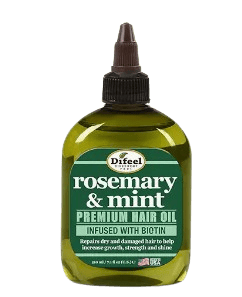
How to Make Rosemary Oil for Hair Growth
For those specifically looking at how to make rosemary oil for hair growth, consider using oils that nourish the scalp. Coconut oil, for instance, is great for deep conditioning, while jojoba oil closely resembles natural scalp oils. Here’s a recipe:
1. Choose Your Rosemary: Use fresh rosemary for a more vibrant infusion.
2. Combine with Coconut Oil: Place 1-2 sprigs of rosemary in a small jar and cover with ½ cup of coconut oil.
3. Heat and Infuse: Warm the mixture slightly, either by using the hot infusion method or letting it sit in the sun.
4. Apply to Hair: Massage this oil into your scalp and let it sit for at least 30 minutes, then wash it out with your regular shampoo.
Using this method allows the rosemary oil to nourish hair growth directly at the roots.
How to Make Rosemary Oil for Hair with Fresh Rosemary
If you have access to fresh rosemary, it’s a wonderful ingredient to make an invigorating oil that can be applied directly to your hair. Fresh rosemary oil has a particularly vibrant scent and is loaded with beneficial compounds that may be more potent than dried rosemary.
Instructions:
1. Gather Fresh Rosemary: Use 1-2 cups of fresh rosemary leaves. Strip the leaves off the stems and rinse them.
2. Infuse with Olive or Coconut Oil: Place the fresh rosemary leaves in a jar and pour olive or coconut oil over them until they’re fully covered.
3. Store in a Warm Place: Keep the jar in a sunny window for about 1-2 weeks, giving it a gentle shake every day.
4. Strain and Store: After a couple of weeks, strain out the rosemary and store the oil in a dark container. This rosemary oil will be especially effective for hair growth and scalp health.
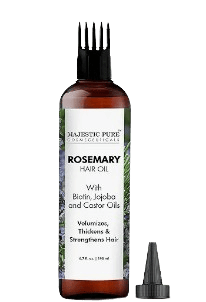
Available on Amazon: MAJESTIC PURE 100% Pure Rosemary Oil For Hair Growth (6.7 fl oz) Infused With Biotin | Hair Strenghtening Treatment | Nourishing & Volumizing | With Jojoba Oil & Castor Oil | Non GMO Verified
Tips for Using Homemade Rosemary Oil for Hair Care
1. Pre-Shampoo Treatment: Massage rosemary oil into your scalp 30-60 minutes before shampooing for a nourishing pre-shampoo treatment.
2. Scalp Massage: Use a small amount of rosemary oil and massage it into your scalp to stimulate blood circulation and support hair growth.
3. Combine with Essential Oils: Add a few drops of essential oils like peppermint or lavender to your rosemary oil for added aromatherapy and scalp benefits.
Common Mistakes to Avoid When Making Rosemary Oil
1. Using Wet Rosemary: Fresh rosemary needs to be completely dry to avoid moisture in the oil, which can lead to spoilage.
2. Overheating the Oil: Heating oil too much can degrade its nutrients. If using the hot infusion method, keep the heat low.
3. Skipping the Strain: Leaving rosemary in the oil for too long after infusion can create a bitter taste and affect the oil’s purity.
Storing Your Rosemary Oil
To make sure your rosemary oil lasts as long as possible, store it in a cool, dark place. If made and stored properly, homemade rosemary oil can last for up to a year. Amber or dark glass bottles work well, as they protect the oil from light exposure which can degrade its quality.
Conclusion
Making your own rosemary oil is a rewarding and straightforward process. Whether you’re interested in using rosemary oil for hair growth or as a soothing remedy, this guide on how to make rosemary oil provides all the essentials to create and enjoy this versatile oil. From choosing fresh or dried rosemary to selecting the perfect carrier oil, you now have all the steps needed to make and use this nourishing, all-natural oil right from the comfort of your home.
Whether you’re following how to make rosemary oil with coconut oil or experimenting with olive oil, the benefits of rosemary oil are well worth the time and effort. Enjoy the process, and may your hair thrive with the power of homemade rosemary oil!
You may be interested in the post:
Ultimate Beauty Hacks That Work – Proven Tricks for Natural Glow at Any Age.
Frequently Asked Questions
1. Can You Make Rosemary Oil with Dried Rosemary?
Absolutely! How to make rosemary oil from dried rosemary follows a similar process to fresh rosemary, and it’s often easier since dried rosemary lasts longer.
2. How Often Should You Use Rosemary Oil for Hair Growth?
For best results, apply rosemary oil to the scalp 2-3 times a week. Regular usage helps maintain healthy hair and encourages growth.
3. Can You Mix Rosemary Oil with Other Oils?
Yes! Rosemary oil pairs well with other oils like castor oil and argan oil for added benefits. Try various combinations to discover what suits your hair type best.

